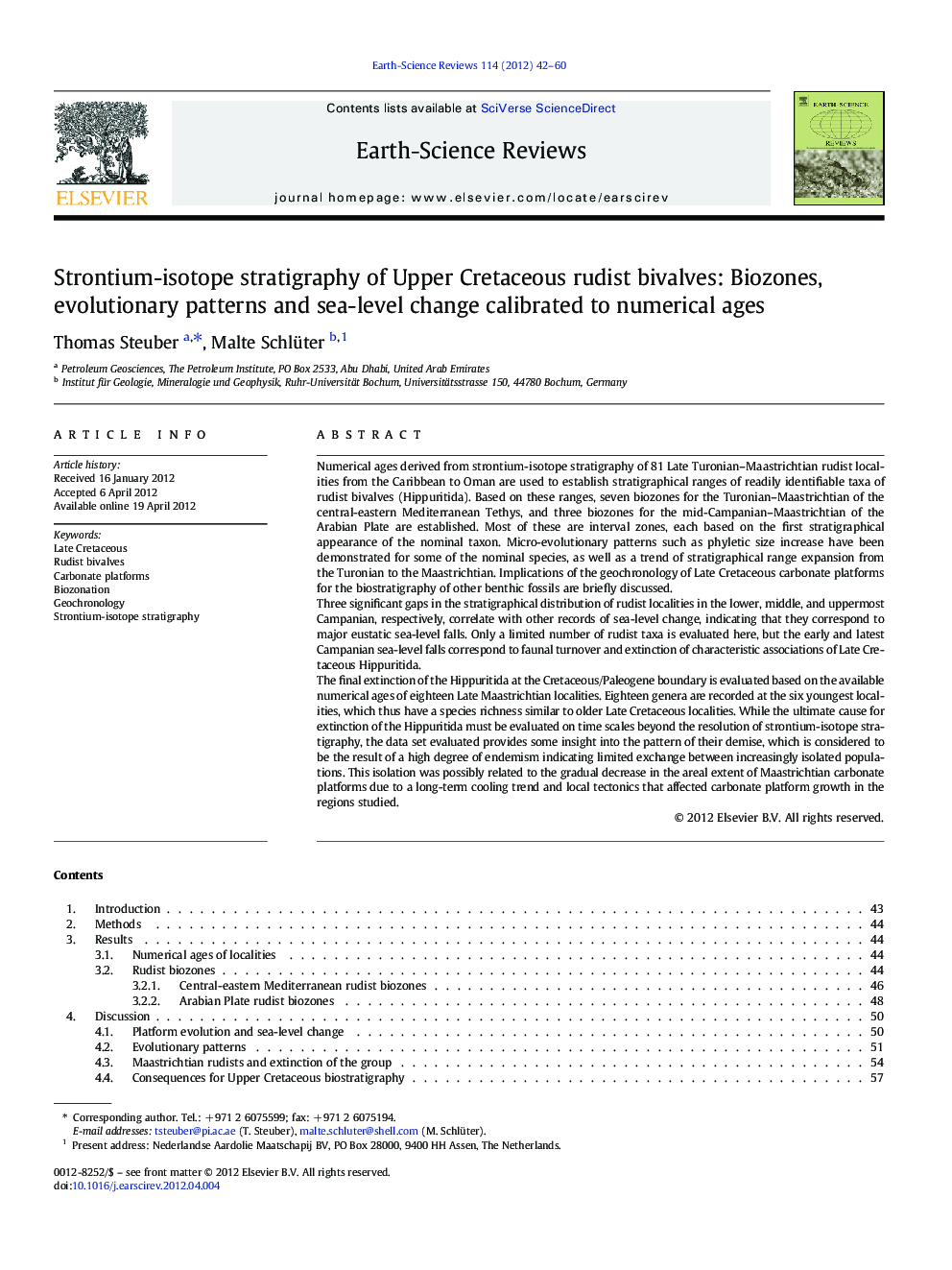| کد مقاله | کد نشریه | سال انتشار | مقاله انگلیسی | نسخه تمام متن |
|---|---|---|---|---|
| 4725956 | 1639989 | 2012 | 19 صفحه PDF | دانلود رایگان |

Numerical ages derived from strontium-isotope stratigraphy of 81 Late Turonian–Maastrichtian rudist localities from the Caribbean to Oman are used to establish stratigraphical ranges of readily identifiable taxa of rudist bivalves (Hippuritida). Based on these ranges, seven biozones for the Turonian–Maastrichtian of the central-eastern Mediterranean Tethys, and three biozones for the mid-Campanian–Maastrichtian of the Arabian Plate are established. Most of these are interval zones, each based on the first stratigraphical appearance of the nominal taxon. Micro-evolutionary patterns such as phyletic size increase have been demonstrated for some of the nominal species, as well as a trend of stratigraphical range expansion from the Turonian to the Maastrichtian. Implications of the geochronology of Late Cretaceous carbonate platforms for the biostratigraphy of other benthic fossils are briefly discussed.Three significant gaps in the stratigraphical distribution of rudist localities in the lower, middle, and uppermost Campanian, respectively, correlate with other records of sea-level change, indicating that they correspond to major eustatic sea-level falls. Only a limited number of rudist taxa is evaluated here, but the early and latest Campanian sea-level falls correspond to faunal turnover and extinction of characteristic associations of Late Cretaceous Hippuritida.The final extinction of the Hippuritida at the Cretaceous/Paleogene boundary is evaluated based on the available numerical ages of eighteen Late Maastrichtian localities. Eighteen genera are recorded at the six youngest localities, which thus have a species richness similar to older Late Cretaceous localities. While the ultimate cause for extinction of the Hippuritida must be evaluated on time scales beyond the resolution of strontium-isotope stratigraphy, the data set evaluated provides some insight into the pattern of their demise, which is considered to be the result of a high degree of endemism indicating limited exchange between increasingly isolated populations. This isolation was possibly related to the gradual decrease in the areal extent of Maastrichtian carbonate platforms due to a long-term cooling trend and local tectonics that affected carbonate platform growth in the regions studied.
Journal: Earth-Science Reviews - Volume 114, Issues 1–2, August 2012, Pages 42–60